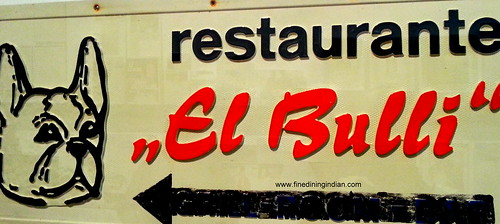
Identify Success and Failure Factors of Your Restaurant Business
FACTORS THAT CONTRIBUTE TO SUCCESS OF RESTAURANT
Have a distinctive concept that has been well researched.
Ensure that all decisions make long-term economic sense. Adapt desirable technologies, especially for record keeping and tracking customers.Educate managers through continuing education at trade shows and workshops. An environment that fosters professional growth has better productivity.
Effectively and regularly communicate values and objectives to employees.In one instance, new owners credited communication of their values and objectives to their employees as a major element in the successful repositioning of their restaurant to better meet the needs of the growing neighbourhood businesses by adding lunch to their dinner-only concept.
Maintain a clear vision, mission, and operation strategies, but be willing to amend strategies as the situation changes.
Create a cost-conscious culture, which includes stringent record keeping.
Focus on one concentrated theme and develop it well.
Be willing to make a substantial time commitment both to the restaurant and to family. One successful owner refused to expand his business into lunch periods because he believed that his full-service dinner house was demanding enough from his family.
Create and build a positive organization culture through consistent management.Maintain managerial flexibility.
Choose the location carefully, although having a good location seems to be more a moderating variable than a mediating (causal) variable in restaurant viability.
FACTORS THAT PILES UP TO FAILURE OF YOUR RESTAURANT
- Lack of documented strategy; only informal or oral communication of mission and vision; lack of organizational culture fostering success characteristics.
- Inability or unwillingness to establish and formalize operational standards; seat-of-the-pants management.
- Frequent critical incidents; managing operations by “putting out fires” appears to be a common practice.
- Focusing on one aspect of the business at the expense of the othersPoor choice of location.
- Lack of match between restaurant concept and location.
- Lack of sufficient start-up capital or operational capital.
- Lack of business experience or knowledge of restaurant operations.
- Poor communication with consumers. One restaurant failed to take off after a major renovation because the owners did not communicate to their clientele their reason for closing or their timetable for reopening. Their customers were long gone by the time they reopened.
- Negative consumer perception of value; price and product must match.
- Inability to maintain operational standards, leading to too many service gaps.
- Poor sanitary standards are almost guaranteed to kill a restaurant.
One operation was exposed by a local television station for poor sanitary practices. Though the sanitary conditions subsequently improved—as reported by the finding is that restaurateurs must not be so rigid in their strategy that they fail to see opportunities as they appear. As an example, one of the successful restaurateurs continued to adjust his operations as the neighborhood evolved, and his place became a popular hangout for college students. He gradually changed the menu to add value offerings and to remove the expensive items that his new customers could not or would not order. Thus, the restaurant, which began as a small,family-style restaurant, became a large, value-centered, full-service, coffee shop-style restaurant for college students.
Awareness of specific competitors did not seem to be critical to restaurant success.Most of the owners defined their competition as any dining establishment; one even went so far as to define the competition for dining dollars as “any entertainment during the dinner hours.” Competition was viewed by most of the owners to be a tool for self measurement but not necessarily something to use to develop strategic defenses.
Having a defined targetmarket was not critical to success. Not only was a defined targetmarket not mentioned by any of the owners as a critical factor, but it was not obviousfrom the interviews that successful owners could define their target market. We foundsuccessful owners who could not determine a demographic or psychographic segmentthat they appeal to, and, more to the point, some failed owners could demographicallypinpoint the target market that they had missed Likewise, marketing strategy did not seem
to be critical to a restaurant’s success.
The owners whom are succesful rarely used advertising or promotions. One owner mentioned marketing as a critical factor but went on to discuss the target-market awareness, at the same time stating specifically that advertising is not necessary. On the otherhand, public relations, community involvement, and customer relations were all considered important to their business operations.
The successful owners, when asked about marketing, all discussed these typesof relationships in the community over advertising or promotions. In fact, the mostsuccessful owners all stated a strong belief in not advertising and not using promotions.In that regard, one owner stated, “If you have to give something away then youshouldn’t be in business.”
The owner’s skills and knowledge are critical factors. “One should not rely on others,but should be knowledgeable in all areas of the business.” For ethnic restaurants, loss of authenticity; for all restaurants, loss of conceptual integrity. Becoming everything to everyone; failure of differentiation or distinctiveness. Underestimating the competition. A contemporary restaurant located near an established restaurant adjacent to a golf club failed when it could not draw the golfers from their traditional haunts. Owners thought that their new restaurant would have no problem attracting the golfers.
Lack of owner commitment due to family demands, such as illness or emotional problems. In an extreme example, a child with a long-term illness prevented an owner from devoting necessary time to the restaurant, which soon closed.
Lack of operational performance evaluation systems. In one instance, new owners did not know how to calculate food cost and relied on employees to maintain proper inventory controls.
Frequent changes in management and diverse views of the mission, vision, and objectives.In an example that is common in partnerships, the owners of a failed restaurant could not agree on its direction after just one year of operation.
Poor establishment of vision and mission statements of the business; failure to integrate vision and mission into the operation; lack of commitment in management or employee ranks.
Failure to maintain management flexibility and innovation.
Non controllable, external factors, such as fires, changing demographic trends, legislation, economy, and social and cultural changes.
Entrepreneurial incompetence; inability to operate as or recruit professional managers.Exhibit a model for future research.
Some study indicates that the restaurant failurerate is affected more by internal factors than by external factors, although bothapply. Such attributes as restaurant density, firm size, and managerial characteristics are important to success.
In particular,the manager’s ability to balance family matters with the development of the organization is critical. Along with that balance,it is important for the owner-manager to have the requisite skills to run a restaurant.
While the restaurateur should plan carefully in growing the business, she or heshould be ready at any time to alter plans in response to changes in external factors.Finally, while formal marketing and advertising seem not to be important to thesuccess of an independent restaurateur,the restaurant must pay attention to community and customer relations so that it is perceived to be a part of its community.
Further research should focus on those factors that have been found to be the mostcritical to restaurant survival. Although it is comforting to work with numbers and tolook at external forces and failure rates, it is more important to get to the core internal issues underlying restaurant viability.
Article is inspired from the hospitality management course from ecornell


